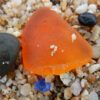If your supply is 1″ keep it at 1″ until the line splits after the zone valve, same goes with … see more. Second, would be the size of the line you’re feeding would be the minimum. If you’re pulling off a 2″ line but feeding a 1″ you would only need a one inch.
Similarly Do I really need a backflow preventer? Understand that it is always recommended to install a backflow preventer in any situation where incoming water and waste water have a chance of being cross-connected. This serves to protect you and your home, keeping your drinking, bathing, and cleaning water safe.
How do I choose a backflow preventer?
Additionally, What type of backflow preventer is required for irrigation?
Anti-siphon valves are the most common type of backflow preventer used on residential irrigation systems, primarily because they are simple and inexpensive.
Where should backflow preventer be installed?
Where is the Backflow Preventer Located? You should have your backflow prevention assembly installed inside an above-ground enclosure. It’s the safest and most cost-effective place to put it.
Does every house have a backflow preventer? For residential properties, backflow prevention isn’t required in most homes. However, if your home has an irrigation system, your local municipality could require that you have the device installed.
Does a backflow preventer reduce water pressure? All backflow preventers, and all fittings, and all lengths of pipe, reduce pressure.
Do outdoor faucets have backflow preventer? The backflow preventer is screwed onto the outside water faucet then the garden hose is connected to the valve. We recommend all Phoenix area homeowners have their outside water faucets inspected. Do not let a simple repair like this cause a major issue for you and your neighbors.
How do I know if I have a backflow prevention device?
Does a sprinkler system need a backflow preventer? Lawn irrigation systems can backflow contaminated water into your drinking water. In order to prevent this, building codes require that these systems be protected with a backflow preventer: International Plumbing Code 2006 608.16. 5 Connections to lawn irrigation systems.
How do you winterize a sprinkler system with a backflow preventer?
How To: Winterize Your Sprinkler System
- STEP 1: Turn off the main water supply and if present, the backflow preventer. …
- STEP 2: Drain any water remaining in the irrigation system. …
- STEP 3: Open all drain valves. …
- STEP 4: Consider hiring a pro (optional, but recommended).
How do you install a backflow sprinkler irrigation?
Do backflow preventers have to be above ground?
Backflow preventers installed inside must be a minimum distance of twelve (12) inches above the floor, and no higher than four (4) foot above the floor, with adequate clearance around the backflow preventer for testing and/or repair.
Can a backflow preventer be installed vertically?
There are backflow preventers that can be installed horizontally, vertically (up or down) and other orientations that can make an installation easier. The key point to realize however is that they can only be installed in the orientation that the approval agency has determined they will work in.
What does backflow mean in plumbing? Unlike blockages, which simply stop the flow of wastewater down pipes, backflow is the active movement of wastewater up into the fresh water supply, which occurs either because of excess pressure on sewer side, or a drop in pressure on the fresh water side.
How do you install a backflow preventer?
Can a backflow preventer cause low water pressure in house?
One of the leading reasons for low sprinkler water pressure relates to the valves on your backflow preventer device. If you notice limited water pressure in your sprinkler system but normal water pressure inside your home, then the problem might be that your backflow preventer valves are not completely open.
Does a hose bib have a backflow preventer?
Do frost proof hose bibs work?
Traditional hose bibs include the shutoff valve right behind the handle. When you shut down the water on a frost-free faucet, the water stops behind the valve, which is set further back inside the home. This indicates the water won’t freeze since it remains where the interior air temperature level is warmer.
Why does my outside faucet spray everywhere? A worn-out vacuum breaker is usually the culprit
When hose connection vacuum breakers start to spray water, it’s a sign they need replacing—and for that you’ll need a metal drill bit and a steady hand.




